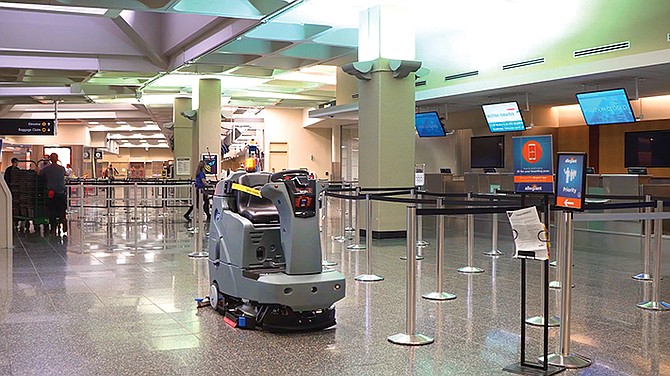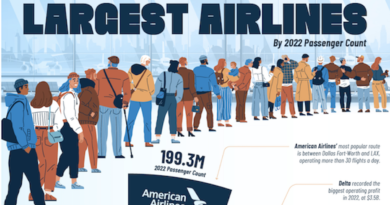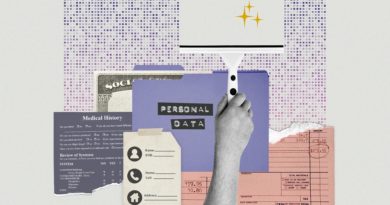Daily Business Report-April 28, 2020
A Brain Corp floor scrubber roams San Diego International Airport autonomously. (Photo courtesy of Brain Corp)
Brain Corp raises $36 million to meet
growing demand for autonomous robots
San Diego-based Brain Corp announced it has raised $36 million in Series D funding to help meet the growing demand for autonomous mobile robots (AMRs) in retail, health care, airports, education and other industries now on the front lines of the COVID-19 health crisis. The round was led by returning investor SoftBank Vision Fund 1, and includes new investors ClearBridge Investments, LLC and Satwik Ventures, and an additional investment from Qualcomm Ventures LLC.
“We have always envisioned a world where robots make the lives of people safer, easier, and more productive,” said Brain Corp CEO Dr. Eugene Izhikevich. “Autonomous robots are playing a vital role in supporting essential businesses and their workers during this health crisis. This investment will help us continue our pace of innovation and fuel our growth as we execute on the opportunity in front of us.”
Working with OEM partners, Brain Corp has deployed or enabled more than 10,000 robots, one of the largest indoor fleets of its kind operating in public spaces. Customers include several Fortune 500 brands, including Walmart and Kroger, as well as Giant Eagle, C&W Services, Simon Property Group, and dozens of other grocers, retailers, airports, educational institutions, and others.
_______________________________
Erasca raises $200 million in Series B
financing to advance lead programs
Erasca, a San Diego company whose mission is to erase cancer, announced the completion of a $200 million Series B financing round co-led by ARCH Venture Partners and Cormorant Asset Management. New investors participating in this financing include global Singapore-based investor EDBI, Invus, Terra Magnum Capital Partners, and other private and strategic investors. Existing investors City Hill Ventures, Colt Ventures and LifeSci Venture Partners also participated meaningfully in the round.
This financing brings the total capital raised by the company to more than $260 million. Erasca will use the proceeds to support the clinical development of multiple promising oncology programs and further advance the company’s in-house drug discovery pipeline.
_______________________________
City of Carlsbad implements touchless
crosswalk signals at 12 intersections
To help slow the spread of COVID-19, the city of Carlsbad has implemented “no touch” crosswalk signal technology that automatically flashes the walk/don’t walk sign at intersections. Traffic signals at 12 intersections in Carlsbad Village and near the coast will not require someone to push a button to cross, lessening the opportunity for virus spread.
The 12 intersections with touchless crosswalk signals were selected because they had the highest number of button pushes a day.
The city is using technology centralized in its traffic management center on Faraday Avenue to efficiently deploy the changes without additional costs. Additional intersections could be added, based on feedback and usage.
Click here to view a map of the locations with the touchless crosswalk signals.
_______________________________
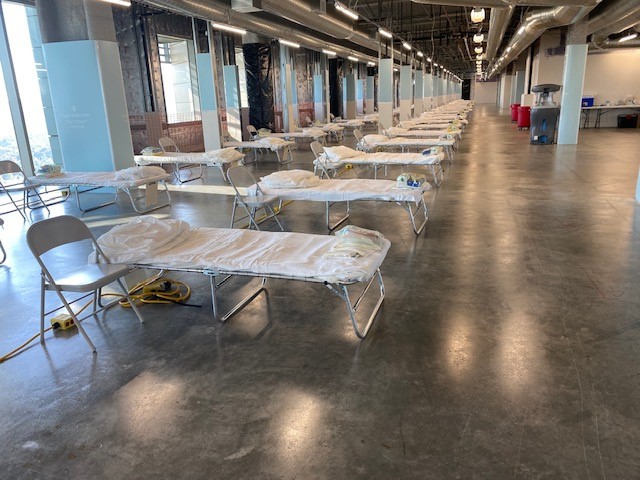
Another alternate care facility readied
at Palomar Medical Center in Escondido
The county of San Diego unveiled an alternate care facility at Palomar Medical Center in Escondido in response to COVID-19.
The 202-bed Federal Medical Station was established with the help of state and federal partners and occupies two formerly vacant floors of the hospital.
The county requested the Federal Medical Station in March as local COVID-19 cases started to increase. The California Department of Public Health processed and approved the project after the Army Corps of Engineers completed a site survey and confirmed the county’s request meets federal criteria.
The new alternate care facility in Escondido is coming online shortly after a similar resource became available at UC San Diego earlier this month. The 350-bed medical facility at the university was created within newly constructed student housing after the university ended in-person instruction due to the spread of the virus in the region.
The two sites will house patients who previously received treatment for COVID-19 at a local hospital and still need to be monitored for symptoms but no longer require a high level of care.
Combined, the two alternate care sites can house 552 patients in case traditional hospitals in the region run out of beds. Right now, hospitals in San Diego have not reached capacity and neither of the two alternate care facilities has been activated.
_______________________________
Ichor Medical System’s TriGrid to be used
with COVID-19 DNA vaccine in development
Ichor Medical Systems Inc. of San Diego announced that its clinical stage TriGrid Delivery System is being utilized for delivery of a DNA vaccine targeting the spike protein of SARS-CoV-2, the virus which causes coronavirus disease 2019 (COVID-19), into non-human primates as part of a prime-boost vaccination strategy being developed by the Naval Medical Research Center.
This collaboration builds on Ichor’s long-standing relationship with the Department of Defense exploring the potential of electroporation-based delivery to increase the potency of a number of biodefense- and pandemic-related DNA vaccines.
DNA vaccines are a promising vaccine platform that are able to promote the generation of antigen-specific antibodies and T cells.
_______________________________
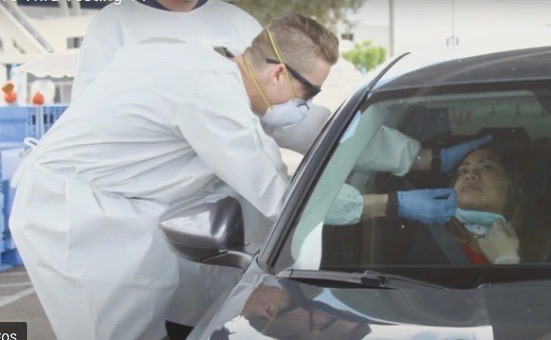
County opens COVID-19 testing sites
in Escondido and Chula Vista
Two new, appointment-only COVID-19 testing sites opened Monday in Escondido and Chula Vista, the county Health and Human Services Agency announced.
One of the drive-through free testing sites is at the North Inland Live Well Center in Escondido, and the other is at the Live Well Center in Chula Vista.
“The two sites were opened to test people with symptoms to meet the needs of the community,” said Wilma Wooten, M.D., county public health officer. “Our goal is to make testing as widely available as capacity and supplies will allow us.”
Doctor Referral and Appointment Needed
People with symptoms who have a health care provider should contact their doctor to get tested. People with symptoms without a provider or health care coverage can call 2-1-1 and ask to speak to the nurse triage line to request a referral. The nurses can give a referral and make an appointment to get tested.
Hours of operation at the two sites are as follows:
- 10 a.m. – 3 p.m. Monday to Friday, North Inland Live Well Escondido Center, 649 W. Mission Ave., Escondido, CA 92025.
- 1 – 7 p.m. Monday to Friday, Live Well Center at Chula Vista,690 Oxford St., Chula Vista, CA 91911.
Testing capacity will also continue at the county’s first drive-through site at the San Diego County Credit Union Stadium in Mission Valley.
Mobile testing sites will soon be deployed in other parts of the region to accommodate the growing demand for testing. The nasal swab tests at all three sites are conducted by County Public Health nurses and using the County Public Health lab. Results typically take between 24-48 hours.
_______________________________
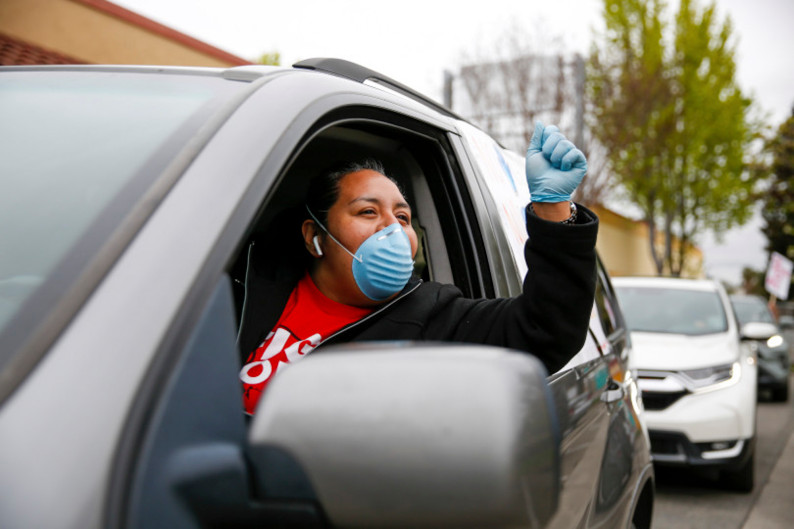
Labor vs. business fight over coronavirus costs
Is COVID-19 covered by workers’ comp?
by Emily Hoeven | CalMatters
Labor and business groups are gearing up for a fight over whether employers — through workers’ compensation — should pay health costs for essential workers infected by COVID-19, with Gov. Gavin Newsom expected to decide the multibillion-dollar debate soon.
Union leaders want Newsom to issue an executive order presuming that essential employees who contract coronavirus did so on the job, rather than in the community, making it easier for them to file workers’ compensation claims for COVID-19. Business groups warn that such a move could raise annual costs for employers by as much as $33 billion per year.
- Denise Davis, spokeswoman for the California Chamber of Commerce: “Imposing a legal conclusion that any employee who contracts the coronavirus is covered by workers’ compensation benefits shifts the cost of the pandemic to the private sector. … The private sector cannot be the safety net for this crisis, that is the role of government.”
So far, Newsom has remained mum on whether he plans to issue such an order, though California employers believe he’s on the verge of doing so. It’s also unclear how an order would define essential workers. Meanwhile, state lawmakers have introduced two bills to accomplish something similar.
Workers’ compensation benefits include health care not subject to copays or dollar limits, medications, disability payments and, in the worst case, death and burial benefits for families. To qualify for the benefits, most workers have to prove they contracted the disease specifically because of their work, and employers can contest their claims.
- Gregory Cattermole, San Mateo workers’ compensation attorney: “I don’t think it’s fair or reasonable that our frontline workers have to bear the burden to prove where it came from. That’s a ridiculous burden to put on people who are really protecting us and keeping the state healthy.”
_______________________________
City of San Diego accepts electronic plans
for all new development projects
Starting May 4, the ity of San Diego Development Services Department (DSD) will start accepting permits online for all new projects, expanding the existing digital permitting process that is currently available for a limited number of permits.
The conversion to a fully cloud-based permitting system is scheduled to launch later this year. In the meantime, electronic plan submittal has been expedited – including the ability for customers to review project status and comments on Open DSD – to help meet safety protocols for customers and employees in response to the COVID-19 pandemic.
Online access was previously limited to projects that didn’t require plan review, including simple no-plan mechanical, electrical and plumbing permits, news rack and right-of-way permits, and residential solar photovoltaic projects, which launched last month.
_______________________________
Casey Brown Companies acquires City Center office
buildings and parking structure for $14.5 million
Two of the largest office buildings on El Cajon Boulevard and a four-story, 149 stall parking structure have been sold for $14.5 million to Casey Brown Companies by the San Diego State University Research Foundation (SDSURF).
The City Center property was sold in an off-market transaction and was structured as a sale leaseback through which SDSURF executed a five-year lease with one five-year extension option. The property is located at 4275 and 4283 El Cajon Blvd.
“We were able to achieve SDSURF’s goal by allowing them to remain at the property and serve their research projects and tenancies over the next several years, while also providing a net-leased opportunity with strong development upside for the buyer,” said Kipp Gstettenbauer of Voit Real Estate Services Private Client Group.
Gstettenbauer and Ryan King of Voit represented the seller and buyer in the transaction.
_______________________________
COVID-19’s true origins
The novel coronavirus is “totally consistent with a jump of a species from an animal to a human,” to put it in the words of Dr. Anthony Fauci, director of the National Institute of Allergy and Infectious Diseases.
But how and where, exactly, did the jump occur? The latest episode of the I AM BIO Podcast explores the “deeper, disturbing truth about the pandemic’s origin” with a fascinating expert on zoonotic disease.
First: What’s a zoonotic disease? A disease that jumps from animals to people due to things like the speed of population growth, the disruption to natural habitats, and the “disregard we’re showing for wild animals not meant to be captured, caged, and eaten,” said BIO President & CEO Jim Greenwood.
And now, 75 percent of infectious diseases are linked back to animals—and they’re increasing. “As we expand our frontiers, we’re exposed to more of these viruses…in nature,” said Dr. William Karesh of the EcoHealth Alliance, a world-renowned expert on zoonotic disease transmission.
Do we know if COVID-19 came from a bat for sure? Yes. Dr. Karesh explains where scientists have found similar SARS viruses in bats—and how humans have much more contact with bats in the wild than we realize.
And between .5 percent to 3 percent of people tested already have antibodies to this group of viruses—which means “these bat viruses are getting into people all the time,” he continued. It’s just that most don’t travel or cause serious illness.
He sets the facts straight on bats and this virus—explaining how the coronavirus might have gotten into humans, why we actually need bats for agriculture and sustainable forestry, and why illegal wildlife trade is a problem even in the United States. (You’ll never believe what customs inspectors have found in the mail.)
He also talks about how we can reduce the threat of zoonotic disease in the future, and as you probably already guessed, One Health—exploring the links between people, animals, and the environment—is key.
The bottom line: “COVID could be just the tip of the iceberg in a new infectious era if humanity doesn’t wake up to the gravity of this threat and resolve to change our ways,” said Jim. Luckily, Dr. Karesh has some ideas about what we can do next.
Listen to the podcast. Click here

